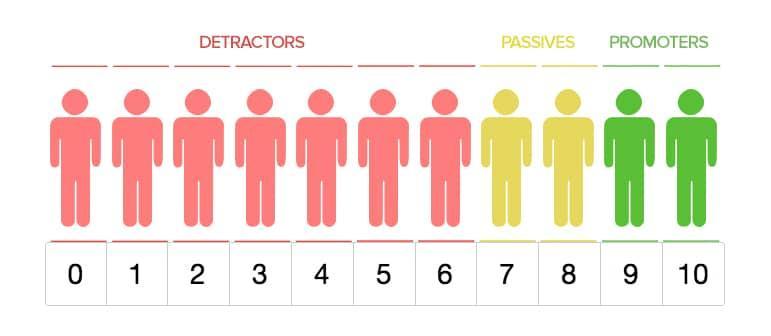It is costlier to attract a new customer than to retain an existing one. This much has been clear for those of us heavily invested in the field of CX. Therefore, it’s important that businesses focus heavily on building customer loyalty. It not only helps in retaining clients but also attracts leads through word-of-mouth marketing.
If you already use NPS for this purpose, you might want to know if your NPS score is favorable or not. Even if you have just included NPS in your CX program, this article can help you.
What is NPS?
Net Promoter Score (NPS) is a CX KPI used to measure customers’ loyalty towards a brand. NPS looks at customers’ willingness to promote a brand to people they know. It is considered a strong implication of customer satisfaction. Companies can gauge referral behavior and forecast customer purchases using NPS. NPS is an implicit yet very effective way of measuring customer loyalty and retention levels.
NPS survey is sent out in the post-purchase phase when customers have a good idea about the overall service and the experience of using the offered product or service. It is a simple survey that’s easy to design and send out, and even from the customer’s end, it requires less time to respond. Therefore, NPS is a popular metric used by millions of brands worldwide.
How is NPS measured?
The NPS survey contains the question:
How likely are you to recommend [the brand name] to a friend or colleague?
The customers respond by rating their willingness on a scale of 1-10, where,
- 0 to 6 stands for detractors, representing unhappy customers who may not purchase from you again and won’t recommend your brand to others.
- 7 or 8 stands for passives, representing customers who are neither satisfied nor dissatisfied and may not take a stand in promoting your products.
- 9 or 10 stands for promoters, representing customers who are very satisfied with your brand. They are highly likely to recommend the brand to others, indicating a strong loyalty towards the brand.

Once the survey responses are gathered, categorize the responses based on the score and calculate the percentage of responses separately. NPS score is calculated by subtracting the percentage of detractors from the percentage of passives. It can range between -100 to +100. Alternatively, you can also use the following formula to calculate it.
NPS = (number of promoters – number of detractors) / total number of responses x 100
What is a good NPS score?
The benchmark for NPS differs based on the industry, as with every other metric, because there are a multitude of factors affecting it. You can look at the average NPS value for your specific industry as earned by leading brands. If you are a startup, it’s important to compare your brand with those of equal ranks and look for ways to improve.
Typically, an NPS score above 30 is considered good. It means that there’s a significant amount of loyal customers for your business. If it’s beyond 50, it’s considered excellent.
Brands should strive for a positive NPS score because a negative value means that detractors are higher than passives. The risk of negative word of mouth is higher, and it’s a big red flag for businesses!
How to get the most out of NPS?
There’s no doubt that NPS is a celebrated metric in the realm of CX. However, you need additional contextual information to gain valuable insights and make accurate interpretations using the data. Also, while NPS is measured in the post-purchase phase, the reason for a lower score might be due to pain points in the preceding stages of the customer journey.
So, it’s not possible to identify them using NPS alone. NPS is far more effective when it’s used in conjunction with other metrics related to satisfaction and loyalty. We highly recommend you use NPS along with other KPIs like EVI® and C-SAT. It will help you identify the cause behind the response and improve customer experience accordingly. These metrics can be applied throughout the customer journey and help CX professionals monitor the quality of the experience and detect pitfalls easily.




